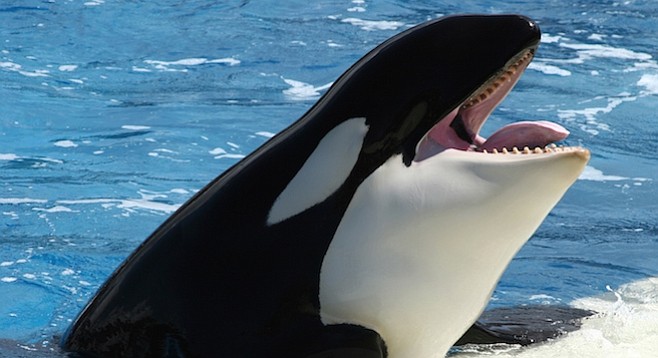 Facebook
Facebook
 X
X
 Instagram
Instagram
 TikTok
TikTok
 Youtube
Youtube

After years of protests, negative advertising campaigns, and lawsuits that have led to plunging revenues and stock prices, SeaWorld executives announced on Thursday (March 17) that they would begin taking steps to end the practice of capturing and breeding orcas (“killer whales”) in captivity.
"Americans' attitudes about orcas have changed dramatically," admits SeaWorld CEO Joel Manby in an op-ed published in the Los Angeles Times, taking some credit for "the attitudinal change that we helped to create."
While the theme-park chain hasn't actively involved itself in capturing wild orcas in decades, it has facilitated the acquisition of animals from other aquariums and has pursued a controversial breeding program that the California Coastal Commission insisted be halted as part of a permitting process to expand the orca tanks at its San Diego park.
Congressman Adam Schiff, a U.S. Representative from Los Angeles, announced intentions last November to introduce a bill that would ban all public display of orcas in captivity.
Despite promises from Manby that "this will be the last generation of orcas in SeaWorld's care," the parks plan to take until 2019 to phase out theatrical shows featuring the animals nationwide (they're slated to end in San Diego sometime next year). They also stop short of caving to activists' demands that captive orcas either be conditioned for release into the wild or retired to "sea pens" many times the size of the tanks where they're currently held.
"Most of our orcas were born at SeaWorld, and those that were born in the wild have been in our parks for the majority of their lives. If we release them into the ocean, they will likely die," continues Manby. "Even the attempt to return the whale from Free Willy, Keiko, who was born in the wild, was a failure."
While activists successfully fought to attempt to rehabilitate and eventually release Keiko in 1998, the orca never fully integrated with a pod, the killer whale's family structure that most male orcas are born into and remain with for life. Instead, the whale repeatedly surfaced in Iceland seeking human contact and care before eventually dying in 2003.


After years of protests, negative advertising campaigns, and lawsuits that have led to plunging revenues and stock prices, SeaWorld executives announced on Thursday (March 17) that they would begin taking steps to end the practice of capturing and breeding orcas (“killer whales”) in captivity.
"Americans' attitudes about orcas have changed dramatically," admits SeaWorld CEO Joel Manby in an op-ed published in the Los Angeles Times, taking some credit for "the attitudinal change that we helped to create."
While the theme-park chain hasn't actively involved itself in capturing wild orcas in decades, it has facilitated the acquisition of animals from other aquariums and has pursued a controversial breeding program that the California Coastal Commission insisted be halted as part of a permitting process to expand the orca tanks at its San Diego park.
Congressman Adam Schiff, a U.S. Representative from Los Angeles, announced intentions last November to introduce a bill that would ban all public display of orcas in captivity.
Despite promises from Manby that "this will be the last generation of orcas in SeaWorld's care," the parks plan to take until 2019 to phase out theatrical shows featuring the animals nationwide (they're slated to end in San Diego sometime next year). They also stop short of caving to activists' demands that captive orcas either be conditioned for release into the wild or retired to "sea pens" many times the size of the tanks where they're currently held.
"Most of our orcas were born at SeaWorld, and those that were born in the wild have been in our parks for the majority of their lives. If we release them into the ocean, they will likely die," continues Manby. "Even the attempt to return the whale from Free Willy, Keiko, who was born in the wild, was a failure."
While activists successfully fought to attempt to rehabilitate and eventually release Keiko in 1998, the orca never fully integrated with a pod, the killer whale's family structure that most male orcas are born into and remain with for life. Instead, the whale repeatedly surfaced in Iceland seeking human contact and care before eventually dying in 2003.
Comments